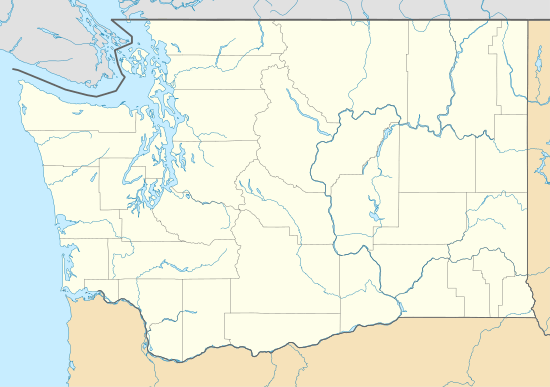Nihongo Gakko (Tacoma)
|
Nihon Go Gakko | |
 Nihon Go Gakko before it was demolished | |
 | |
| Location | Tacoma, Washington |
|---|---|
| Coordinates | 47°14′52.26″N 122°26′29.63″W / 47.2478500°N 122.4415639°WCoordinates: 47°14′52.26″N 122°26′29.63″W / 47.2478500°N 122.4415639°W |
| Built | 1922 |
| Architect | Heath & Gove[1] |
| NRHP reference # | 84003568[2] |
| Added to NRHP | August 30, 1984 |
The Nihon Go Gakko (日本語学校 Nihongo gakkō, literally, Japanese Language School) alternately, Nihon Gogakko, in what was then Tacoma, Washington's Japantown, was one of 24 Japanese language schools that existed in Washington prior to World War II.[3]
History
The building was built in 1922 to replace a smaller building and accommodate a larger enrollment. It was designed by Frederick Heath of Heath, Gove and Bell.[4] Because Washington had laws preventing aliens from owning land, the lot was paid for by a school corporation that was made up of three Americans, and two Issei Japanese Americans. Two lots were bought for a total cost of $1,600, and the building was built at a cost of $9,000.[5] An addition to the building was added in 1926.[6] The school taught classes on the English language, the Japanese language, and Japanese culture.[7]
During World War II the building was used to gather Japanese residents during World War II, before sending them to internment camps.[8]
The University of Washington bought the building in 1993 after it established a campus in Tacoma. By this point, the decades of vacancy had left the building quite dilapidated.[9] The same year, the university had made a request to the Tacoma Landmarks Preservation Commission for permission to demolish the building and replace it with a commemorative garden, but failed to act on their approval. In 2001, the City of Tacoma told the university that the building was a safety hazard and the following year the Preservation Commission renewed their approval of the plan for demolition.[10] The university received an estimate of $3 million to rehabilitate the building, and decided that the cost was not feasible.[6]
Despite being listed on the National Register of Historic Places, as well as being a City of Tacoma Landmark,[9] the building was demolished in 2004 after having stood vacant since the 1940s. Prior to its demolishing, the school was one of only two Japanese language schools left, of around four dozen that existed in the Western United States and Hawaii.
See also
| Wikimedia Commons has media related to Tacoma Nihon Go Gakko. |
References
- ↑ "CYS-T187". Image Archives. Tacoma Public Library. Archived from the original on 23 January 2016. Retrieved 26 July 2014.
- ↑ National Park Service (2007-01-23). "National Register Information System". National Register of Historic Places. National Park Service.
- ↑ Asato 2006, p. 100
- ↑ "Japanese Language School Memorial". University of Washington, Tacoma. Retrieved 27 July 2014.
- ↑ Asato 2006, pp. 91–92
- 1 2 Michael Wark (July 1, 2003). "Historic Japanese Language School building could be leveled in late fall". Archived from the original on October 10, 2007. Retrieved 2008-02-28.
- ↑ "Historic American Buildings Survey - Nihon Go Gakko". Retrieved 2008-02-28.
- ↑ "University to commemorate Japanese Language School". November 13, 2003. Archived from the original on August 14, 2007. Retrieved 2008-02-19.
- 1 2 Sandercock 1998, p. 64
- ↑ "Fact Sheet: Japanese Language school likely to be leveled by winter". July 1, 2003. Retrieved 2008-02-28.
Sources
- Asato, Noriko (2006). Teaching Mikadoism: The Attack on Japanese Language Schools in Hawaii, California, and Washington, 1919-1927, Honolulu: University of Hawaii Press, ISBN 0-8248-2898-4.
- Magden, Ronald E. (1998). Furusato: Tacoma-Pierce County Japanese 1888-1988, Nikkeijinkai: Tacoma Japanese Community Service.
- Sandercock, Leonie (1998). Making the Invisible Visible: A Multicultural Planning History, University of California Press, ISBN 0-520-20735-1.